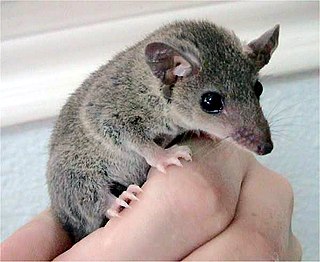
Monodelphis is a genus of marsupials in the family Didelphidae, commonly referred to as short-tailed opossums. They are found throughout South America. As of January 2019, the most recently described species is M. vossi.

Triatoma dimidiata is a blood-sucking insect whose range extends from northern South America, throughout all the countries of Central America and into Southern Mexico. It is among the most important carriers of Trypanosoma cruzi, the flagellate protozoa that causes Chagas disease. Dimidiata has been found in rock piles, caves occupied by bats, hollow trees occupied by mammals or birds, and other diverse ecotopes. However, their presence in human abodes is usually happenstance; people tend to bring them indoors with their firewood. When in the nymph form they may camouflage themselves from predators by scraping dust over their dorsal abdomen, a behavior also observed in T. phyllosoma, T. nigromaculata, Panstrongylus geniculatus, P. megistus and P. herreri nymphs. Moreover, due to geological past in Mesoamerica such as forest loss, and rising temperatures, there has been an increase in Triatomine bugs infestation.

The yellow-sided opossum is an opossum species from South America. It is found in Argentina, Brazil and Uruguay. They have grey or black fur on their dorsal side with yellowish fur on the lateral side that continues down to the feet. They are the most mysterious of all the Monodelphis that is found specifically in the Pampean region or Pampa of Argentina. It is suspected to be a once-in-a-lifetime breeder as seen in a three-year observational study of one population in the marshy grasslands of the Pampean region. Maintaining their native grasslands is important for them to keep a stable population. They show sexual dimorphism in overall size: adult males are typically 100-150 g whereas adult females are 30-70 g.

The two-striped jumper, or Telamonia dimidiata, is a jumping spider found in various Asian tropical rain forests, in foliage in wooded environments.
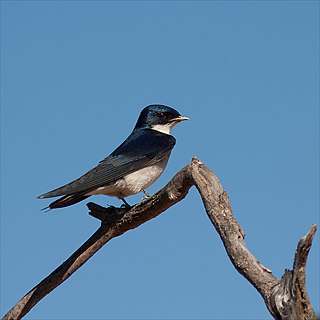
The pearl-breasted swallow is a small swallow.
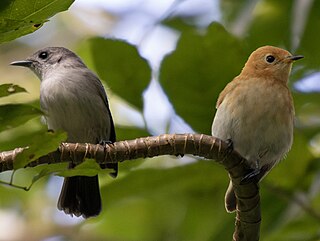
The Rarotonga monarch, also known as the Rarotonga flycatcher or Kākerōri, is a species of bird in the monarch flycatcher family Monarchidae. It is endemic to Rarotonga, Cook Islands, and has been introduced to Atiu, Cook Islands.

Idaea dimidiata, the single-dotted wave, is a moth of the family Geometridae. It is a Holarctic species.

Apodytes dimidiata is a bushy tree with white flowers bearing a fragrance reminiscent of fresh coconut, and small black and red fruits. It is usually about 5 m tall, and it is indigenous to Southern Africa. The taxonomical family placement for this and other Apodytes was uncertain; it is now placed in the Metteniusaceae. Its English common name is in reference to the timber which is similar in appearance to that of the European pear tree of the northern hemisphere.
Emphytoecia is a genus of longhorn beetles of the subfamily Lamiinae, containing the following species:
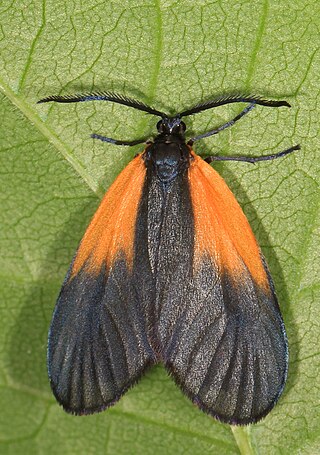
Pyromorpha dimidiata, the orange-patched smoky moth, is a species of leaf skeletonizer moth of the family Zygaenidae found in eastern North America.
Machadoella is a genus of parasitic alveolates in the phylum Apicomplexa.
Emphytoecia alboliturata is a species of beetle in the family Cerambycidae. It was described by Blanchard in Gay in 1851. It is known from Chile.
Emphytoecia lineolata is a species of beetle in the family Cerambycidae. It was described by Blanchard in Gay, in 1851. It is known from Chile.
Emphytoecia suturella is a species of beetle in the family Cerambycidae. It was described by Blanchard in Gay in 1851. It is known from Chile.
Emphytoecia camousseighti is a species of beetle in the family Cerambycidae. It was described by Cerda in 1995. It is known from Chile.
Emphytoecia niveopicta is a species of beetle in the family Cerambycidae. It was described by Fairmaie and Germain in 1864. It is known from Chile.
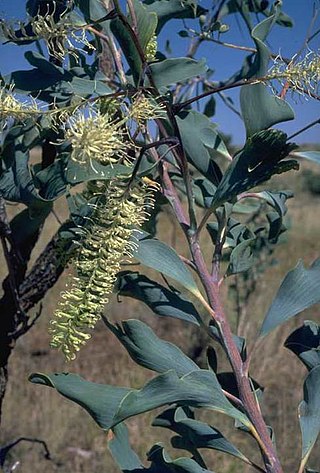
Grevillea dimidiata, also known as the caustic bush or willings tree, is a species of flowering plant in the family Proteaceae and is endemic to northern Australia. It is a shrub or small tree with glabrous, more or less sickle-shaped, curved leaves with wavy edges, and cylindrical groups of greenish-white to cream-coloured flowers.

Glenea dimidiata is a species of beetle in the family Cerambycidae. It was described by Johan Christian Fabricius in 1801. It is known from Malaysia and Indonesia.

Eristalis dimidiata, the black-shouldered drone fly, is a species of hoverfly native to much of Canada and the eastern and northern United States. It flies year-round in southern areas and from late March to mid-November further north. It is one of the earliest hoverflies to fly in the spring, and as such likely overwinters as an adult. It lives primarily in forests.

Acacia dimidiata is a small tree belonging to the genus Acacia in the subgenus Juliflorae. It is native to northern Australia, being found in both in the Northern Territory, and Queensland. It is considered a species of least concern in the Northern Territory and Queensland.












